Hooded Merganser
The Hooded Merganser is a regular winter resident at Salter Grove and can be seen from the causeway or along the Marsh Trail from November through March. Small flocks fly frequently between the Providence River, and North and South Coves. It dives ceaselessly for small fish, and it is rare that all members of a raft can be seen above water at the same time. It is smaller than both the Common Merganser and Red-breasted Merganser, two other mergansers documented for the park.
At a distance, this small merganser may be confused with the similarly small Bufflehead which dives energetically for invertebrates. The male of both species has a large patch of white on the head behind the eye. Luckily, female plumage helps to distinguish between the two. The female Hooded Merganser has a head that is all reddish brown whereas the female Bufflehead has a small but conspicuous white cheek patch.
A closer view of the Hooded Merganser reveals its saw-toothed bill that firmly grips any fish caught. In contrast, the Bufflehead has a goose-like bill ideal for digging up invertebrates from a muddy substrate. The Hooded Merganser has a sleekly profiled head that often opens into a crest, whereas the Bufflehead has a bulbous head that appears disproportionately large for its small body.
The Hooded Merganser is yet another duck species that nests in tree cavities--sometimes in holes that are up to 50 feet off the ground. Imagine that leap taken by the newly hatched duckling on "jump-day" in response to its mother's call from 50 feet below the nest opening.
Like several other cavity-nesting ducks such as the Common Goldeneye, Common Merganser, and Wood Duck, the Hooded Merganser is a brood parasite. The female will lay eggs in the nest cavity of other ducks, but of course, it gets parasitized in turn. Its maximum clutch is known to be 13 eggs but as many as 44 eggs have been found in a Hooded Merganser nest. Nests with so many eggs are often abandoned.
A study during 2020-2021 by Rhode Island's Department of Environmental Management found that nest boxes intended for Wood Ducks were commandeered by Hooded Mergansers. It would appear that appropriately placed nest boxes can restore nesting opportunities for all cavity-nesting ducks after human activities have eliminated their natural breeding sites.
Hooded Mergansers breed in forested wetlands from southern Canada to the south of the United States. Northern populations may not move very far to spend the winter if they can find ice-free bodies of water nearby to hunt for fish. They prefer to be near the well-vegetated shores of lakes and rivers, in marshes, and impoundments.

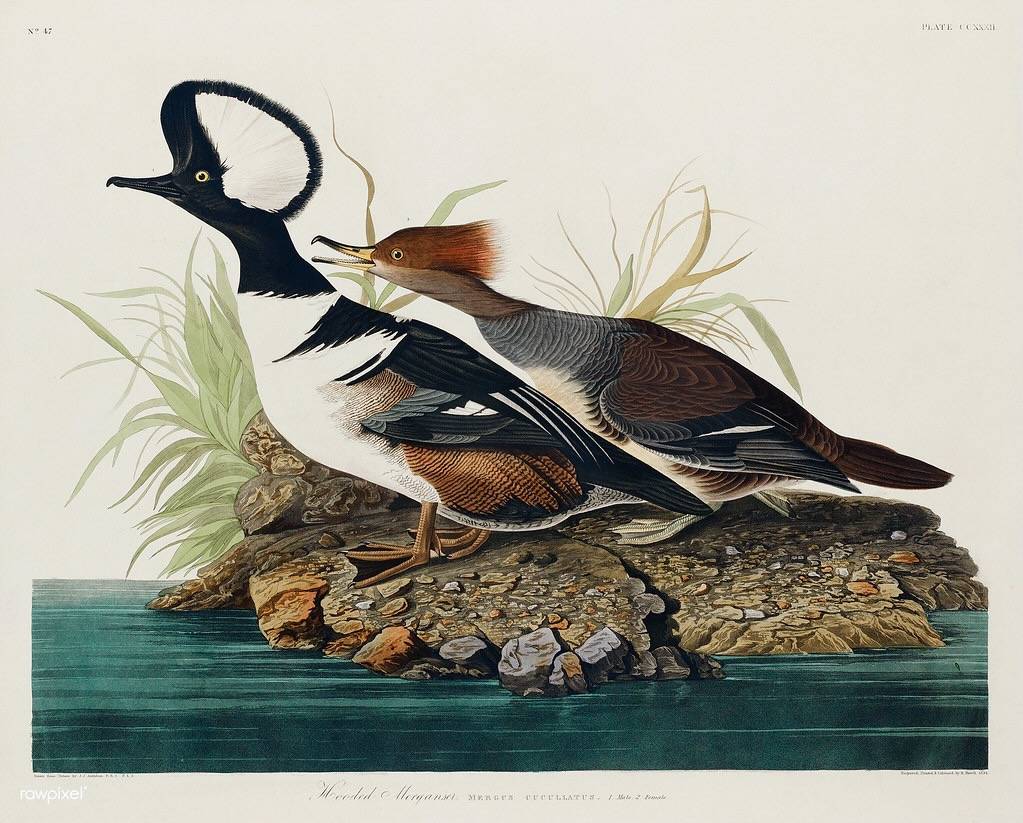
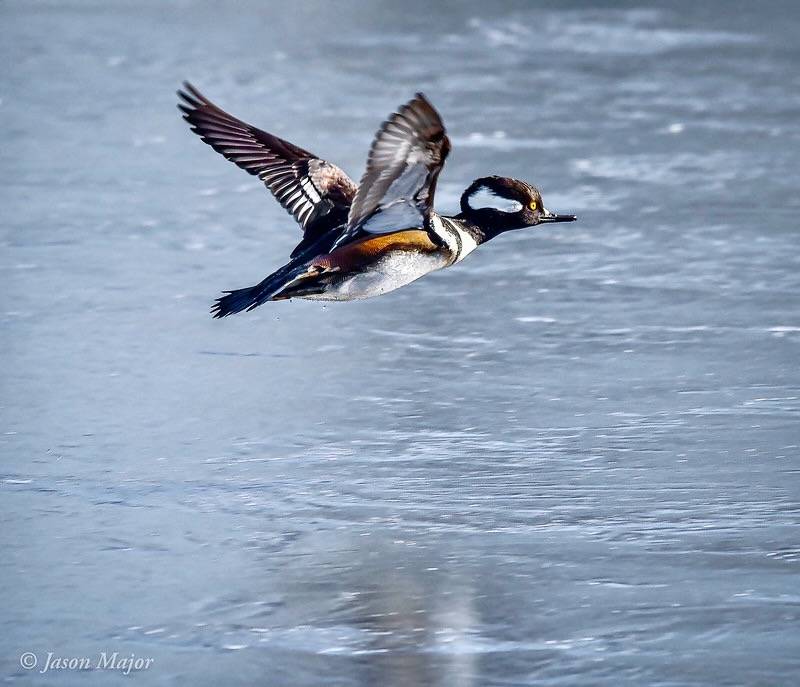
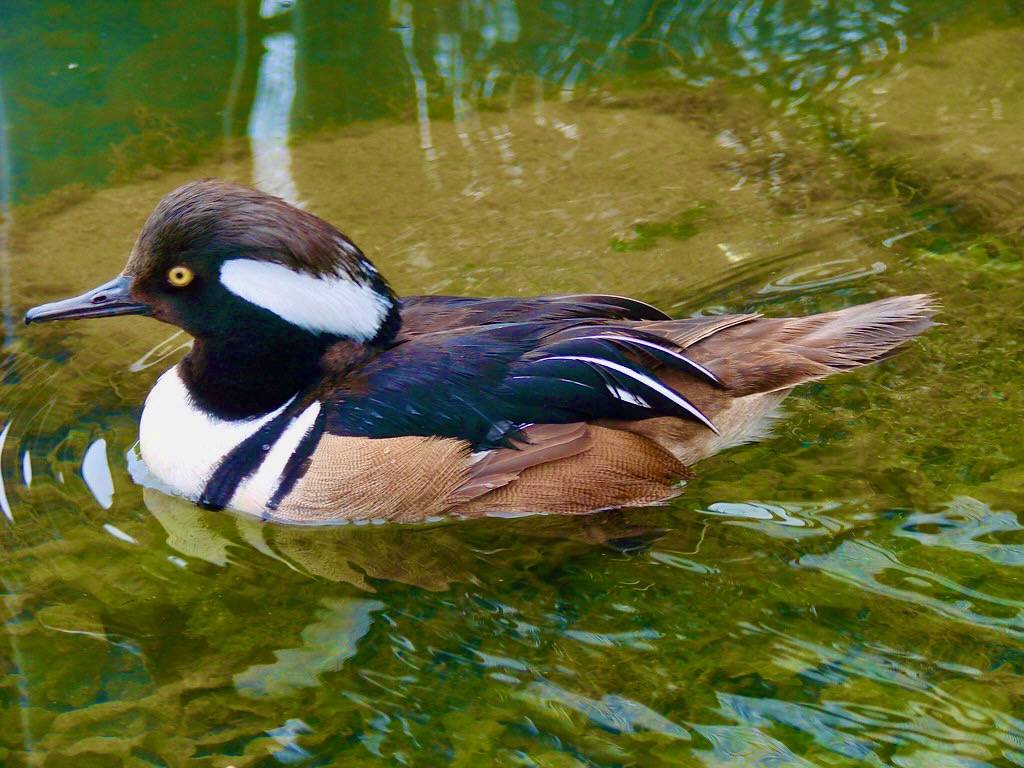
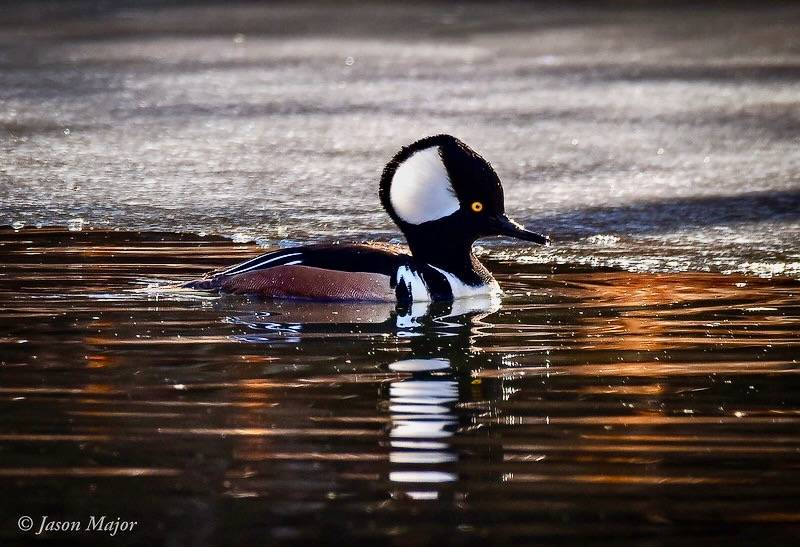
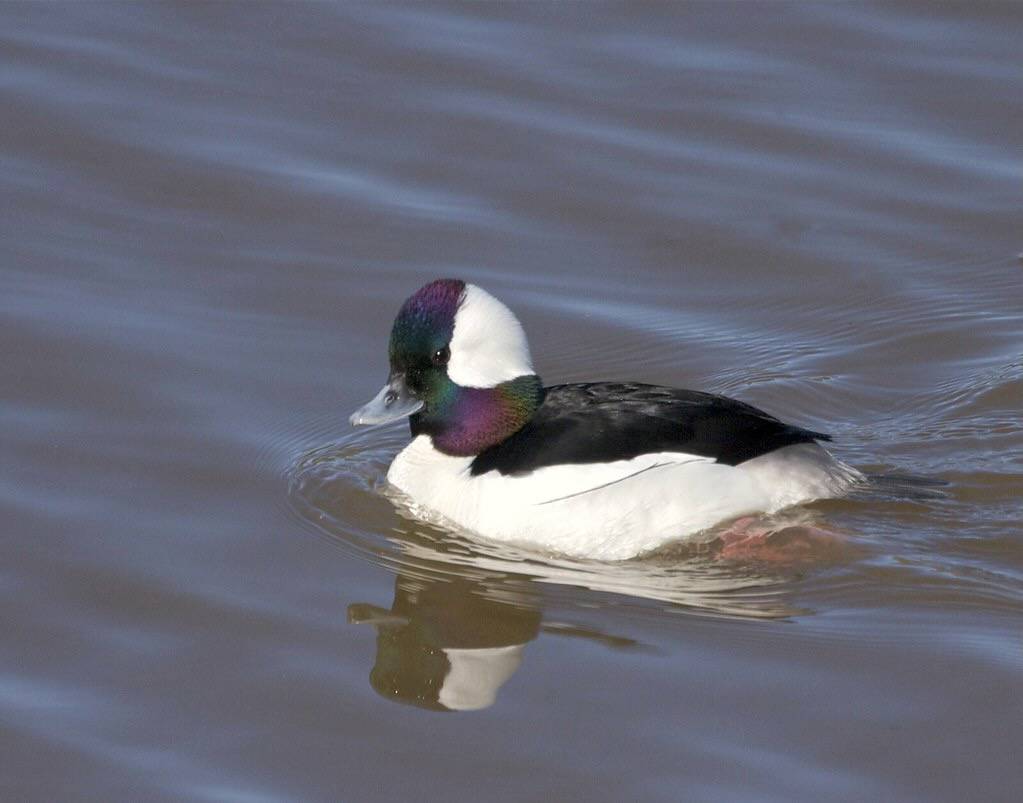
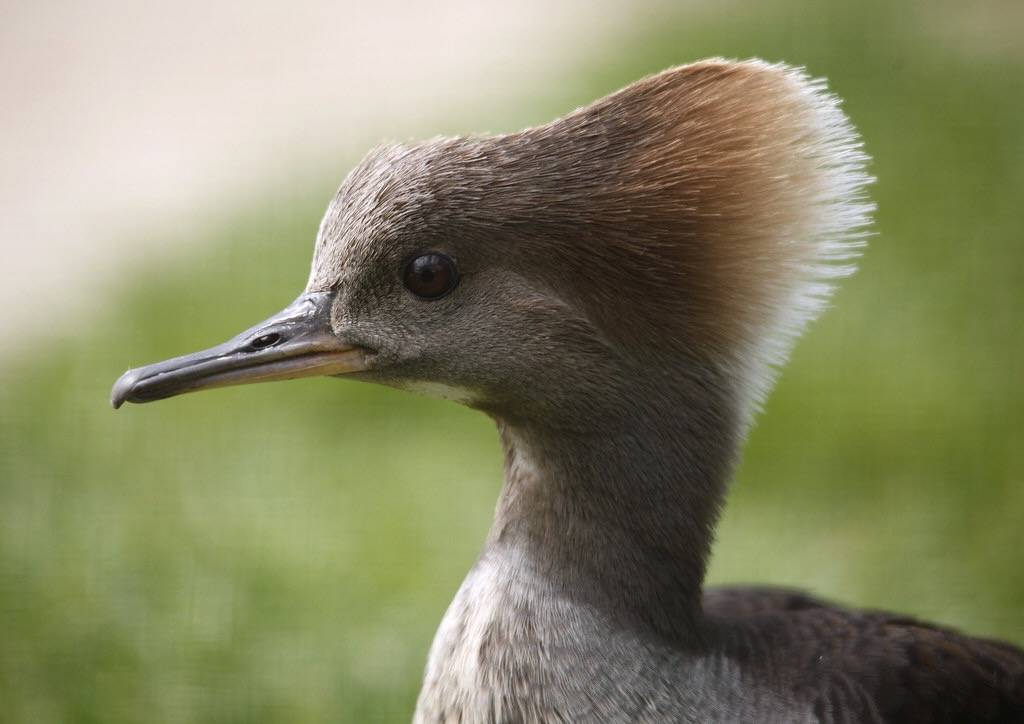
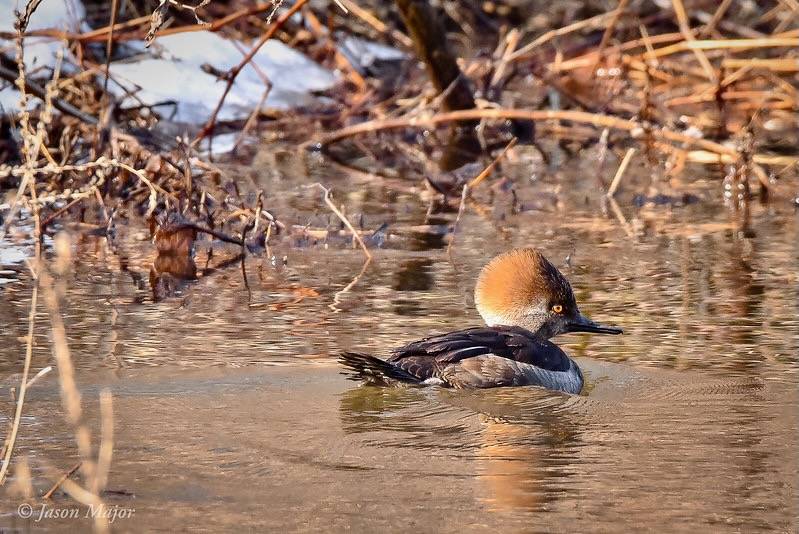
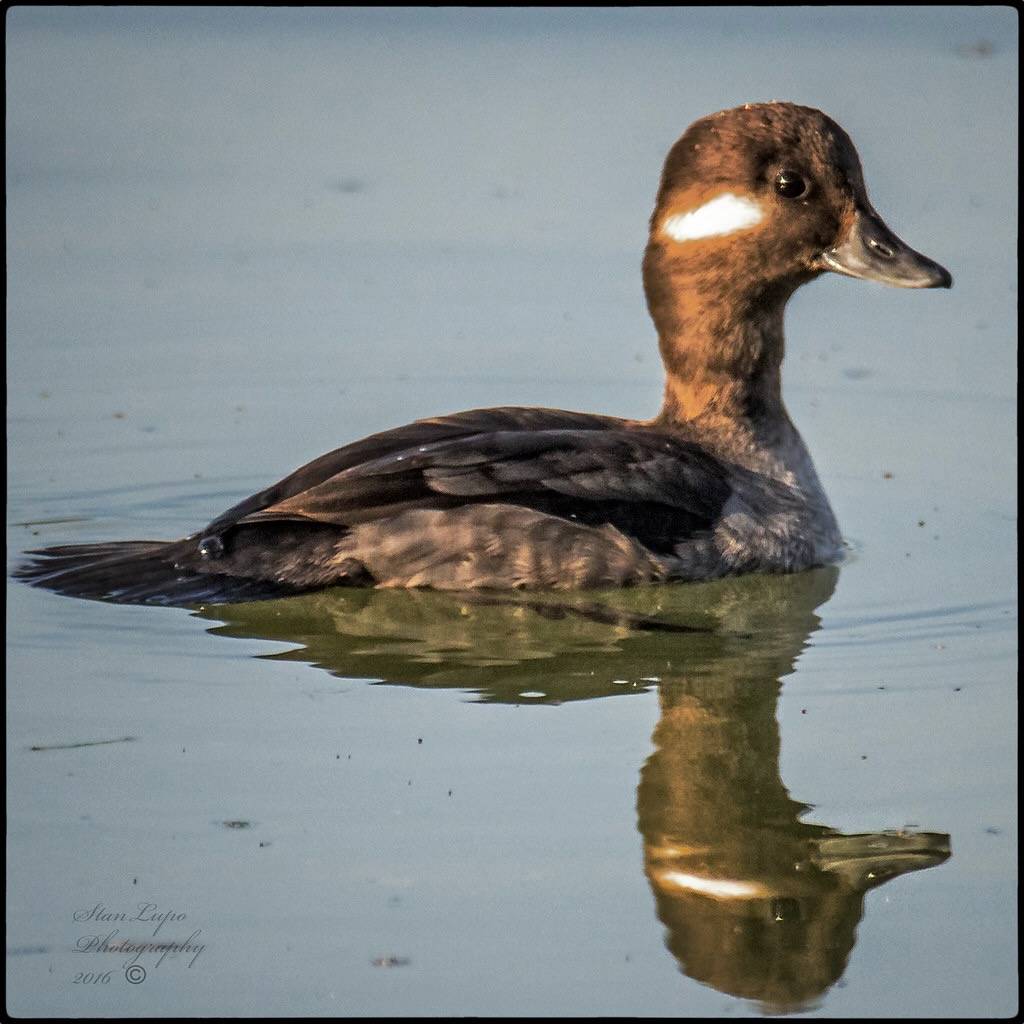
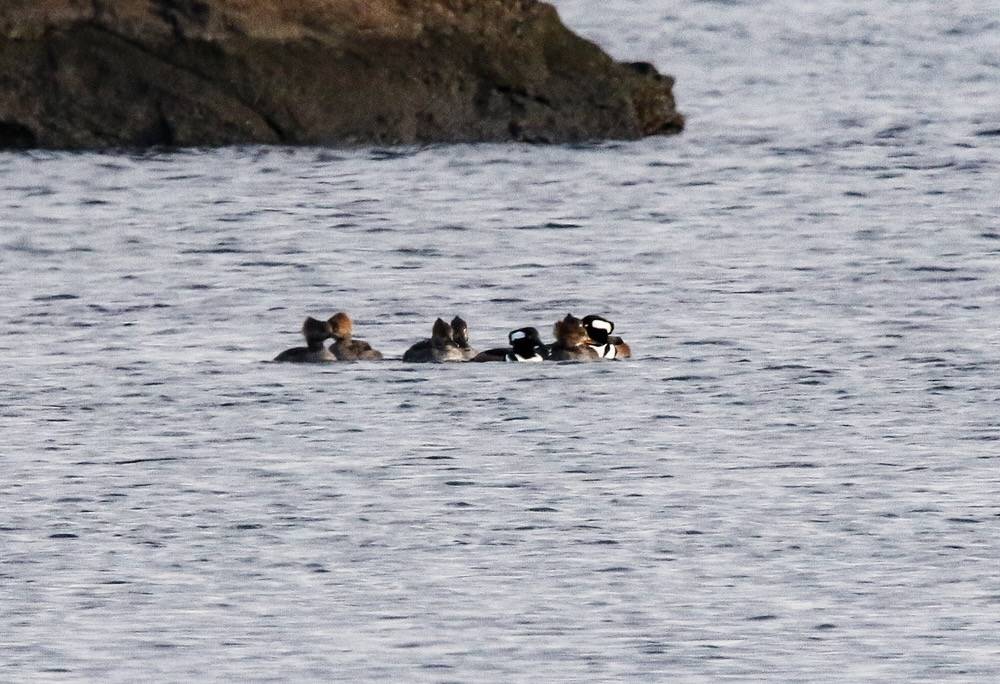
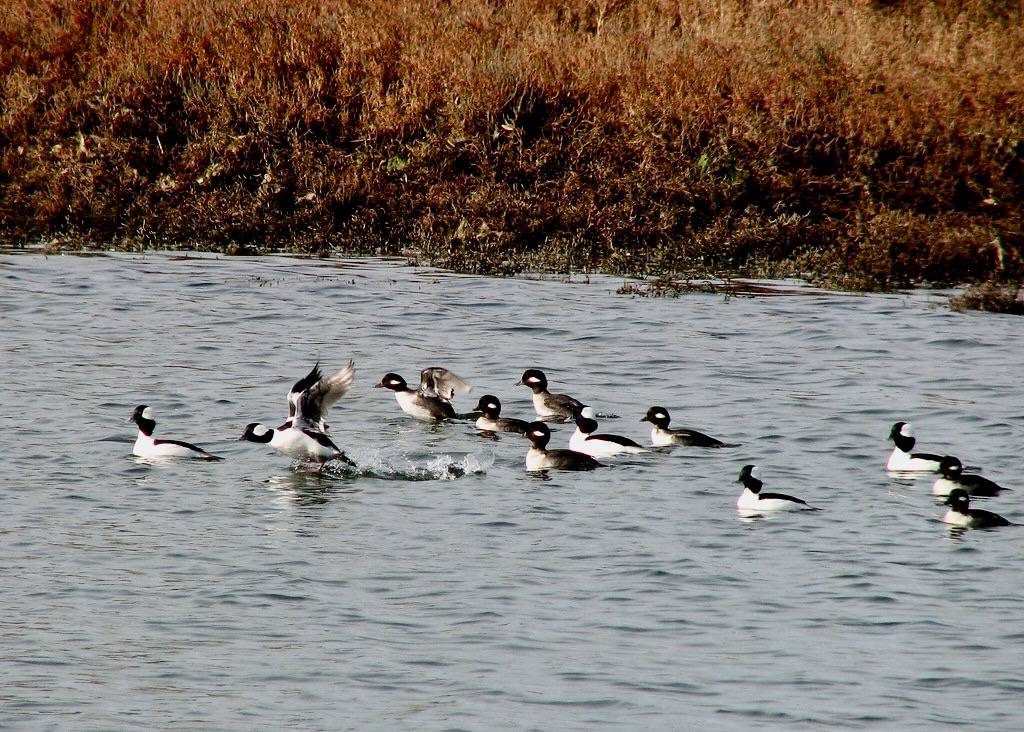
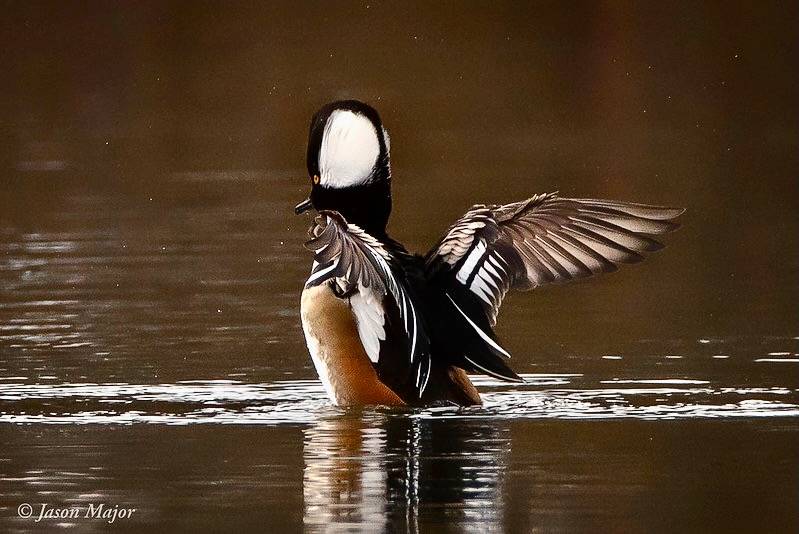
.jpeg?w=350?blur=10)
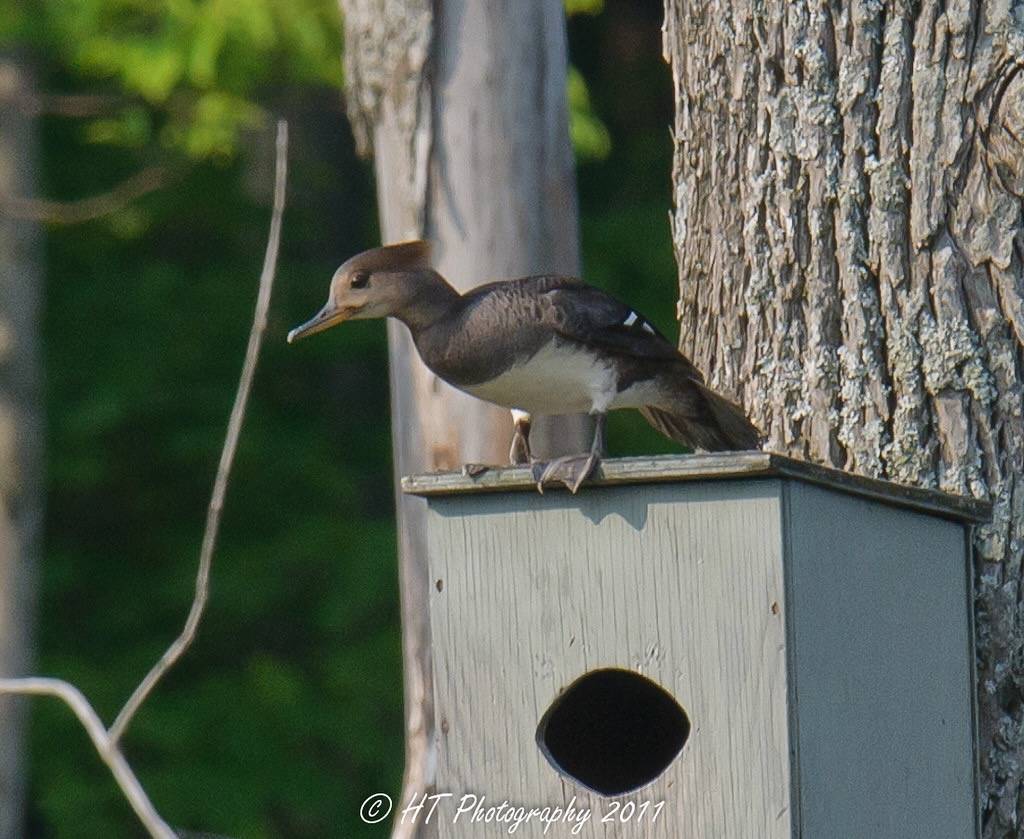
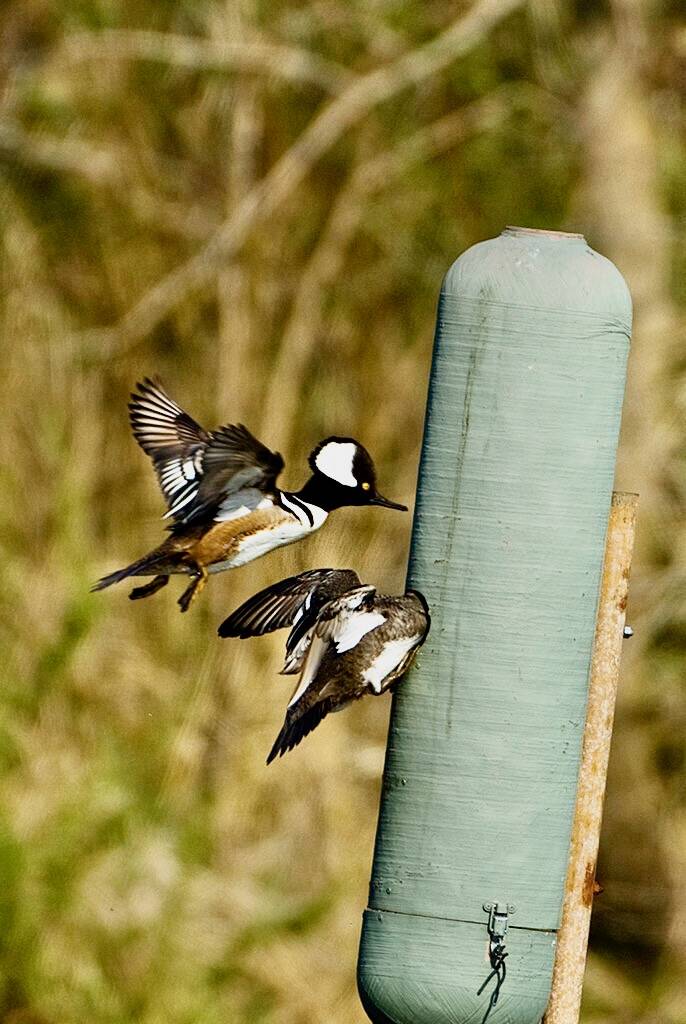
 and Wood Duck eggs.jpeg?w=350?blur=10)
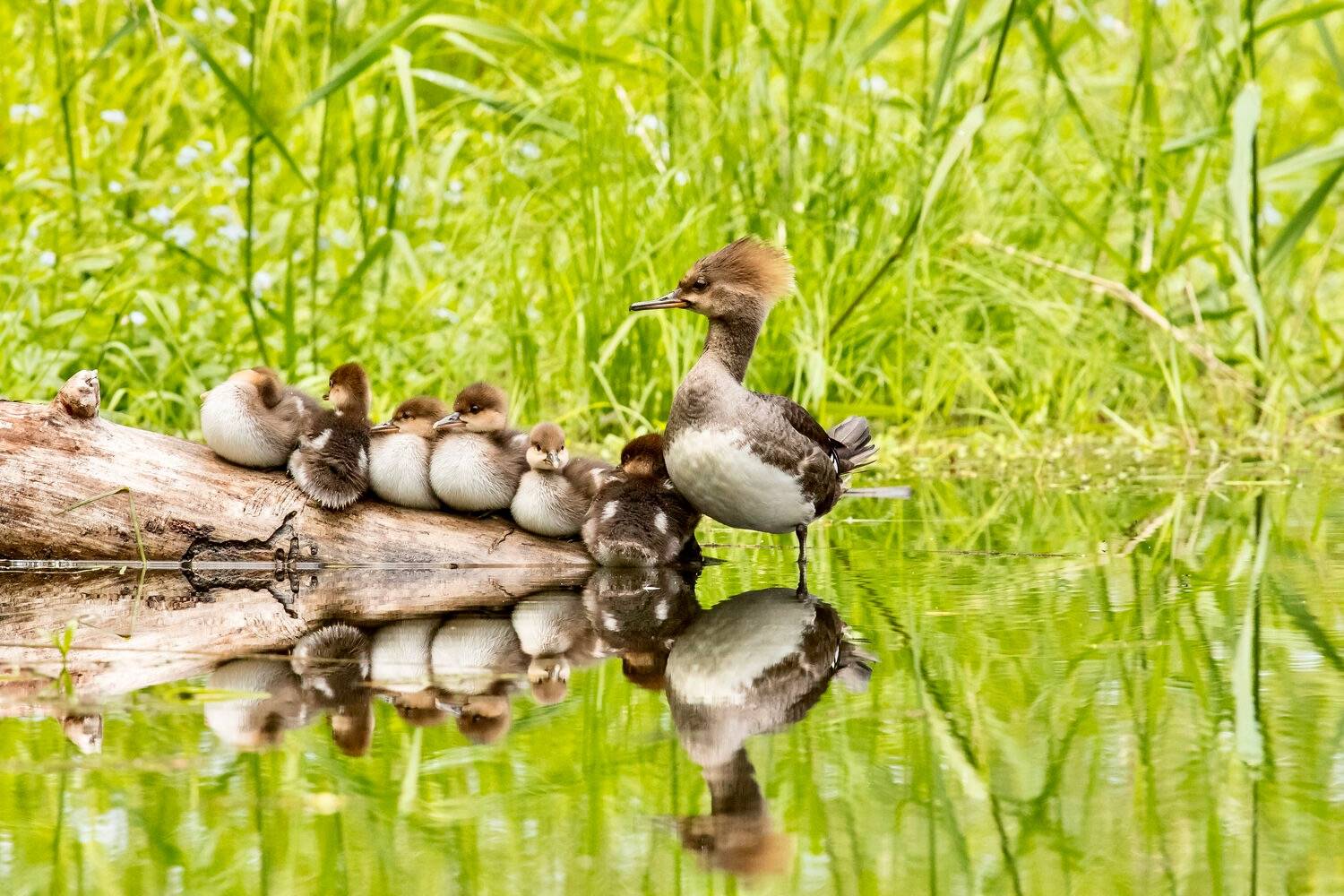
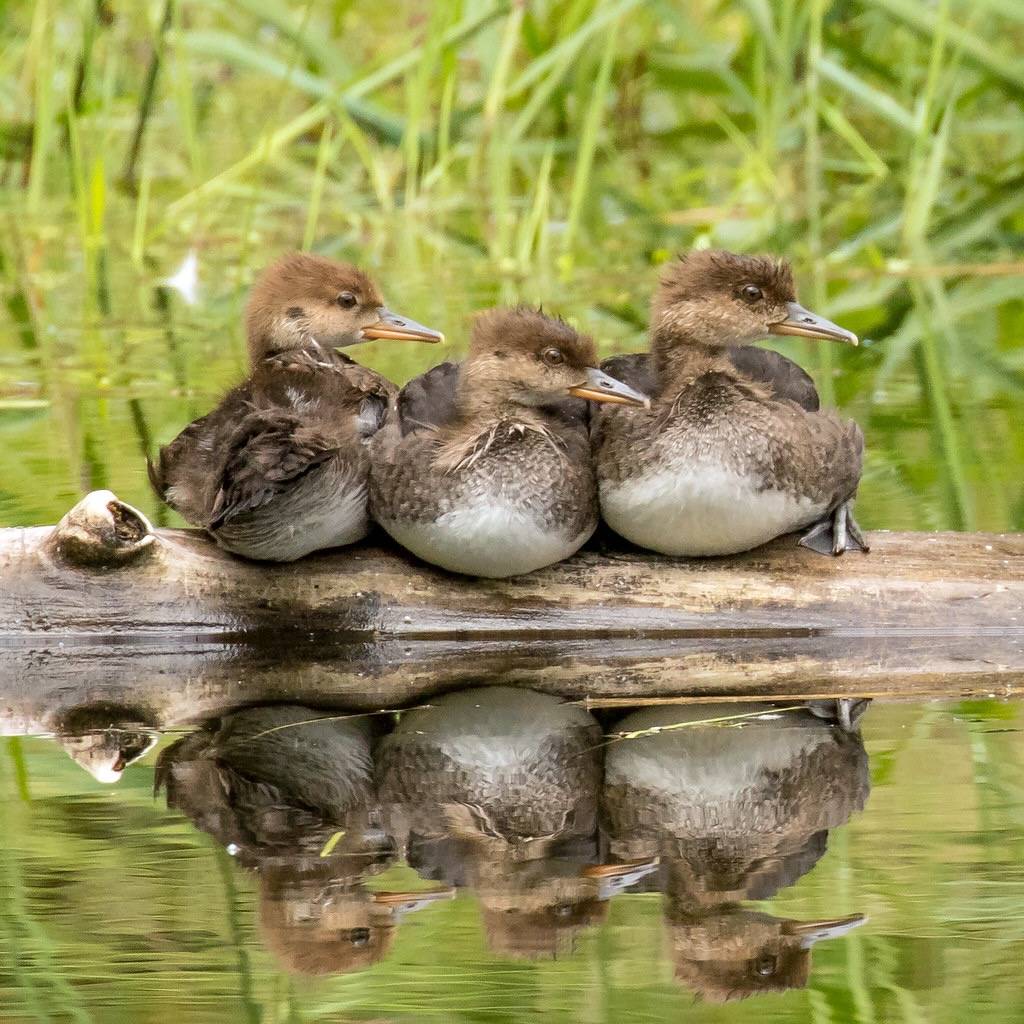
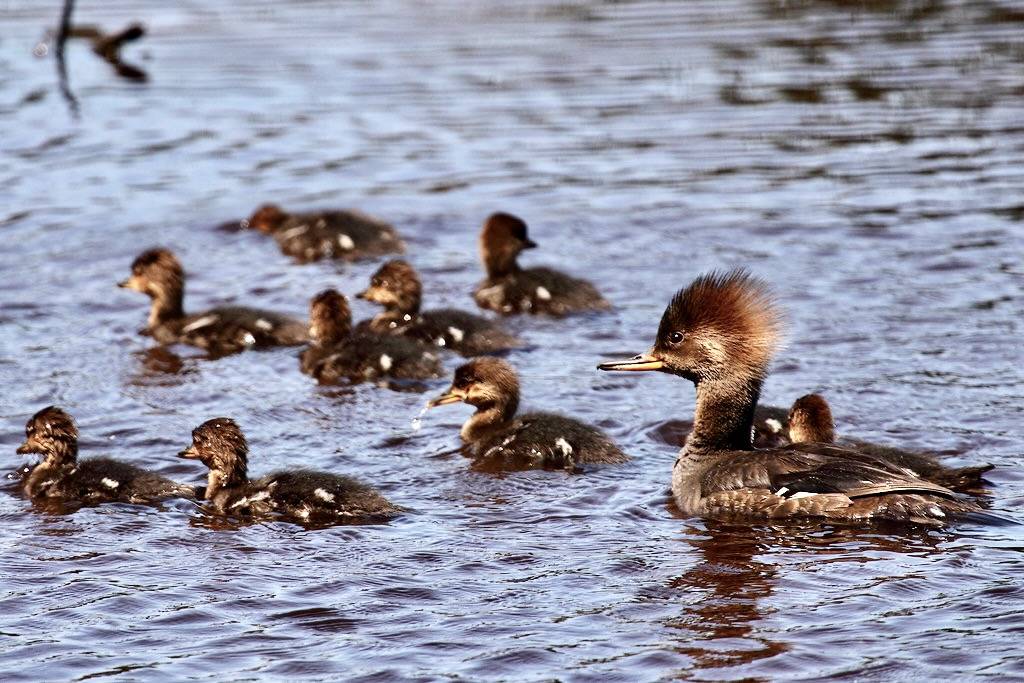
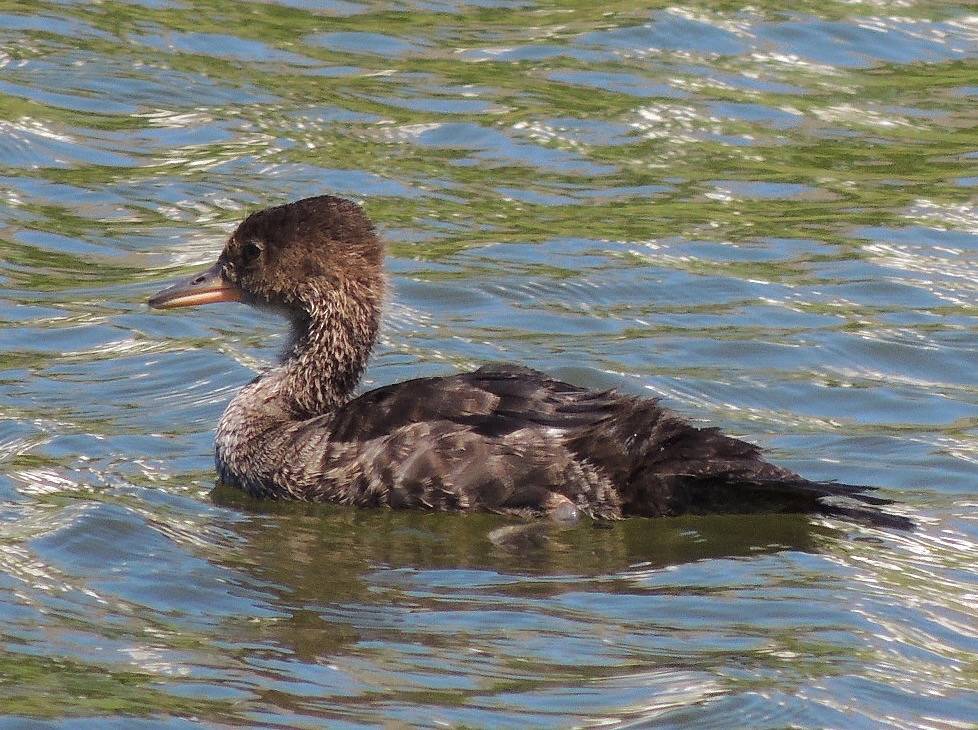
, hen (r) 2feb14.jpeg?w=350?blur=10)